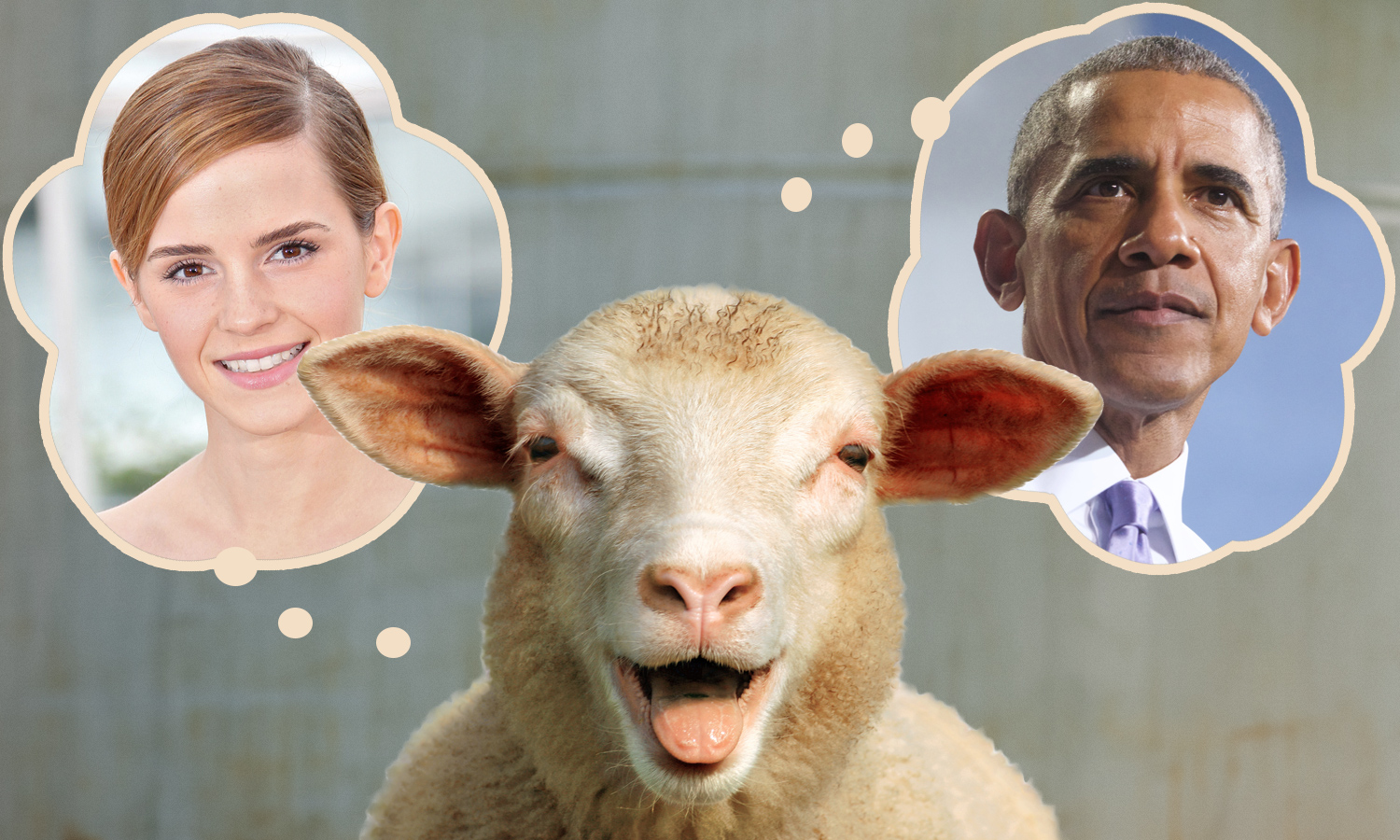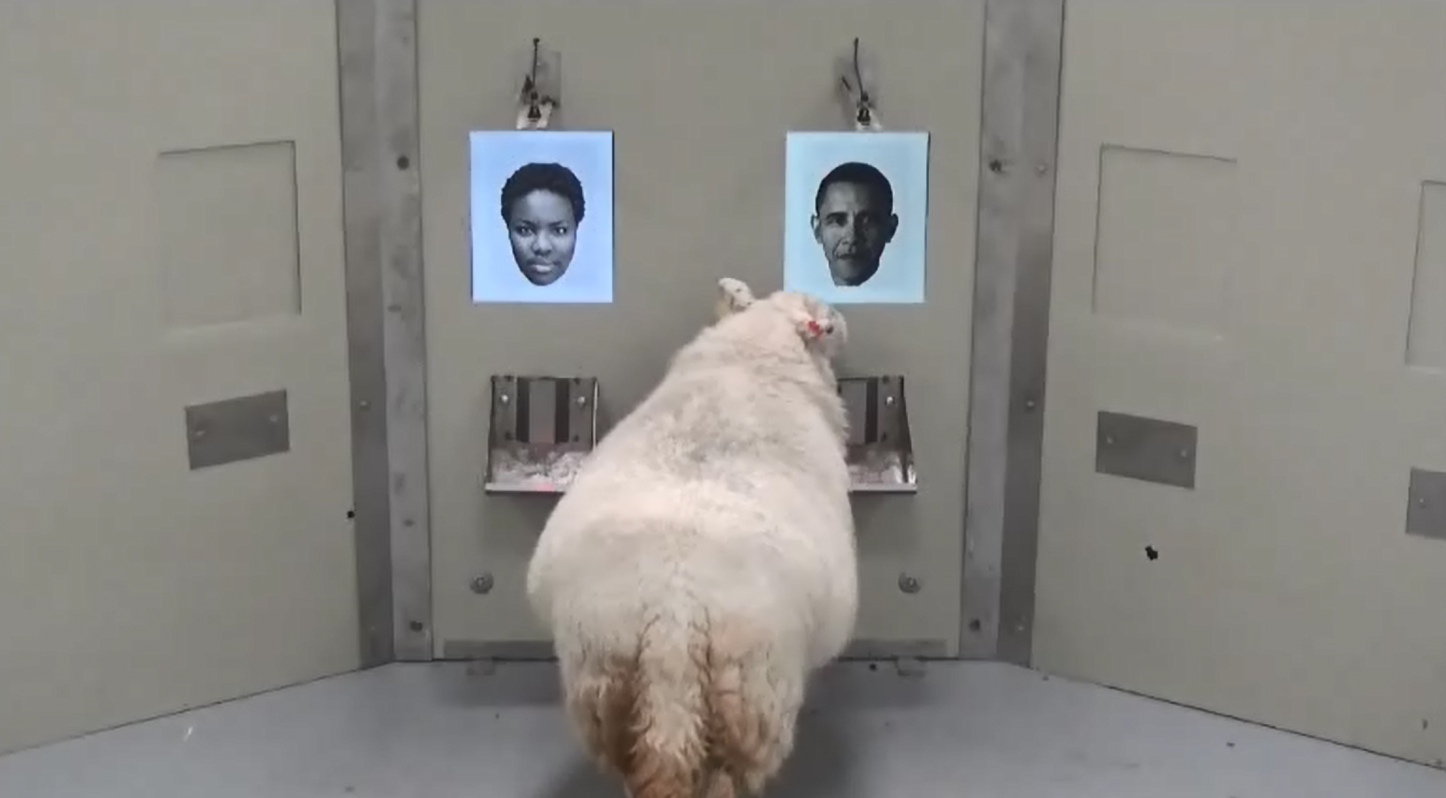That's Baa-rack! Sheep Can ID Obama, Other Celebs

Sheep are social animals, and as such, it behooves them to recognize one another's faces. They have even shown they can recall the faces of people who regularly care for them. But sheep recently demonstrated an ability that is somewhat unusual: They can learn to recognize an unfamiliar human face even when they aren't seeing it in three dimensions.
The new study showed that sheep could be trained using photos to recognize people who were previously unknown to them — such as actress Emma Watson and former U.S. President Barack Obama. And the animals were able to repeatedly do so, even with images that showed the faces from different angles.
And the wooly creatures aren't half baa-aad at it. In fact, their performance demonstrated facial-recognition abilities on par with those of humans and other primates, the study authors reported. [The 12 Weirdest Animal Discoveries]
Facial recognition is an important human social skill, and scientists evaluate how well animals recognize faces in order to understand the beasts' cognition, and to analyze the implications of facial recognition for the animals' social behavior.
Previous studies showed that sheep can tell the difference between human and sheep faces in photos, and studies show sheep activate similar neural pathways during facial recognition tasks as humans and nonhuman primates do, the study authors reported.
Face-off
For the new study, eight sheep were trained to recognize four faces that are relatively famous (to humans, anyway): those of Watson, Obama, actor Jake Gyllenhaal and British television journalist Fiona Bruce, which were presented to the sheep as images on a computer screen.
The scientists selected these particular celebrities because there were plenty of images of them available online, and because they were fairly certain that the sheep had never seen any of them in person before, "though Barack Obama has been to Cambridge recently," study co-author Jennifer Morton, a professor of neurobiology at the University of Cambridge in the United Kingdom, told Live Science in an email.
Get the world’s most fascinating discoveries delivered straight to your inbox.
First, the sheep learned to select a "celebrity" face image rather than an image of a black screen or an inanimate, vaguely head-shaped object. They then progressed to a choice between a celebrity face and a similar but unfamiliar face. Then, to make sure that the sheep weren't merely memorizing images but truly recognized a face by its distinct features, researchers offered the sheep a choice between two photos: one of an unfamiliar face and one of the celebrity face, but displayed at a different angle than seen in previous trials.
The sheep chose the celebrity faces — the ones that were familiar to them — about 79 percent of the time. Their rate of success dipped somewhat — to about 67 percent —when the faces were angled to the left or right, or had a different hairstyle, but these results were still significantly higher than if the sheep were picking faces purely by chance, the study authors reported.
Interestingly, human success rates in facial recognition tests showed a similar drop when people looked at familiar faces that were presented a different angle, according to the study.
"We can't know that the sheep recognized the person, but the evidence suggests this is so," Morton told Live Science.
"A lot of work has been done on how humans recognize faces. We based our conclusions on what has been shown in humans," she said.
Further tests showed that sheep could also recognize the faces of their handlers from photographs, selecting them correctly in 72 percent of trials without any additional training.
Prior animal studies have shown that chimpanzees, our close relatives, can identify human faces, but so can other animals that aren't part of the primate family. Pigeons can remember the faces of people that shoo them away, avoiding those individuals even when they are wearing different clothes. In 2011, scientists reported that magpies on a university campus scolded and attacked researchers who had previously surveyed the animals' nests, even after the researchers had swapped clothes with other people.
And be careful about crossing a crow; not only do they remember the faces of people who threaten them, but they can also hold grudges that last for decades, researchers found. Crows also appear to share information with their friends and family about individuals that they recognize; scientists reported in 2011 that after they had captured and released individual crows, they would be scolded by dozens of angry corvids when they returned to the area.
But for Morton and her colleagues, learning about facial recognition in sheep was just one step in the researchers' goal of answering bigger questions about brain function. The study informs their ongoing work with sheep to investigate Huntington's disease (HD), a hereditary and degenerative disorder in people that affects motor regions of the brain. The disease is currently incurable and has limited options for treatment, according to the National Institute of Neurological Disorders and Stroke.
"Cognitive decline is a major therapeutic target in HD," Morton explained on her research department's website.
"If we can test cognition in sheep, we can see if there is a decline in cognition in the HD sheep. If so, they will be very useful large-animal models of HD in which novel therapies can be tested," Morton said.
The findings were published online today (Nov. 7) in the journal Royal Society Open Science.
Original article on Live Science.

Mindy Weisberger is a science journalist and author of "Rise of the Zombie Bugs: The Surprising Science of Parasitic Mind-Control" (Hopkins Press). She formerly edited for Scholastic and was a channel editor and senior writer for Live Science. She has reported on general science, covering climate change, paleontology, biology and space. Mindy studied film at Columbia University; prior to LS, she produced, wrote and directed media for the American Museum of Natural History in NYC. Her videos about dinosaurs, astrophysics, biodiversity and evolution appear in museums and science centers worldwide, earning awards such as the CINE Golden Eagle and the Communicator Award of Excellence. Her writing has also appeared in Scientific American, The Washington Post, How It Works Magazine and CNN.



